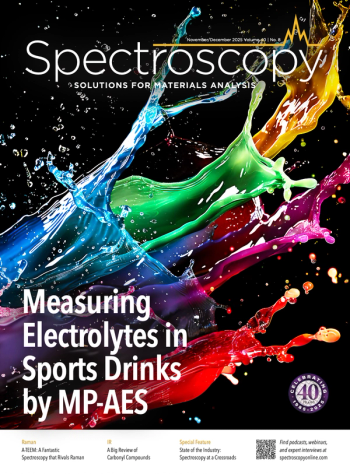
Unraveling the Mysteries of Stonehenge: Portable Raman Spectroscopy Sheds Light on Altar Stone’s Origins
Researchers using a portable Raman spectroscopy system have begun in-field analysis of Stonehenge's Altar Stone, aiming to determine its origin and composition, potentially uncovering new insights into the ancient monument's history.
The portability of spectroscopic instruments is one of the major trends occurring in the technology right now. Portable instrumentation has been one of the greatest drivers of research being conducted on site. It has allowed researchers to analyze samples without moving them to a laboratory, which quickens the analysis time.
One area where we’ve seen portable instrumentation work effectively is in archaeometry. A couple years ago, Spectroscopy reported on how portable X-ray fluorescence (p-XRF) was used to analyze the megaliths of Stonehenge, one of the most popular and intriguing archaeological sites in the world (1). Since that time, more work has been done analyzing Stonehenge to learn more about the origins of the megaliths used to create this site.
In particular, researchers have focused on studying the Altar Stone. Part of the fascination with this stone comes from its unique composition. Unlike the other bluestones at Stonehenge, the Altar Stone is a gray-green micaceous sandstone, raising questions about its origin and classification (2,3).
A recent research collaboration between Renishaw, Aberystwyth University, and the University of Milano-Bicocca evaluated the potential of a portable Raman spectroscopy system to analyze large prehistoric relics in situ, bypassing the limitations of traditional laboratory methods (3). The findings of this study were published in Microscopy Today, and the investigation was led by Jorge Diniz (3).
Historically, in-field compositional analysis of such large prehistoric relics has been severely limited. The sheer size of the Altar Stone, estimated at six tons, and its partial burial make it nearly impossible to transport to a laboratory for detailed analysis (3). Portable spectroscopic instrumentation alleviates this concern, and it allowed the research team to use a Raman analyzer on site for analysis.
The research team conducted their research from dusk until dawn to ensure that their work was undisturbed by tourists. Renishaw provided its Virsa Raman analyzer for the analysis (3). Using a portable Raman analyzer was good for this task because Raman spectroscopy is highly sensitive to the chemical composition and mineralogical makeup of geological samples (3). This technique allows for the acquisition of Raman spectra from different areas of the Altar Stone, providing a mineralogic fingerprint and chemical images that are crucial for characterizing the stone (3).
The Altar Stone’s composition has long been a topic of debate among geologists. Its micaceous sandstone differs significantly from the other bluestones at Stonehenge, suggesting a different geological origin (3). By using portable Raman spectroscopy, the research team aimed to confirm the stone’s provenance and identify its geographical source (3). The data collected in this study is currently being analyzed in Italy by Professor Andò, a leading expert in geological analysis.
Although the full results of the study are still being determined, the successful application of the portable Raman spectroscopy system in this study demonstrates how prehistoric relics can be effectively analyzed (3). Traditionally, small samples are taken to a laboratory for analysis using a Raman microscope. However, this approach is not feasible for massive relics like the Altar Stone. The Virsa analyzer, by allowing researchers to bring the laboratory to the sample, opens new possibilities for in-field compositional analysis.
References
(1) Wetzel, W. Using Portable X-ray Fluorescence Spectrometry (PXRF) to Explore the Origins of the Sarsen Megaliths at Stonehenge. Spectroscopy 2022, 37 (3), 22–23. DOI:
(2) Spectroscopy Staff, Using pXRF Analysis and Automated SEM-EDS To Study Stonehenge's Altar Stone. Spectroscopy. Available at:
(3) Ando, S.; Barbarano, M.; Diniz, J.; Bevins, R. E.; Pearce, N. J. G. Investigating the Secrets of Stonehenge with Raman Spectroscopy: Provenance of the Ancient Altar Stone. Microscopy Today 2024, 32 (3), 28–29. DOI:
Newsletter
Get essential updates on the latest spectroscopy technologies, regulatory standards, and best practices—subscribe today to Spectroscopy.


